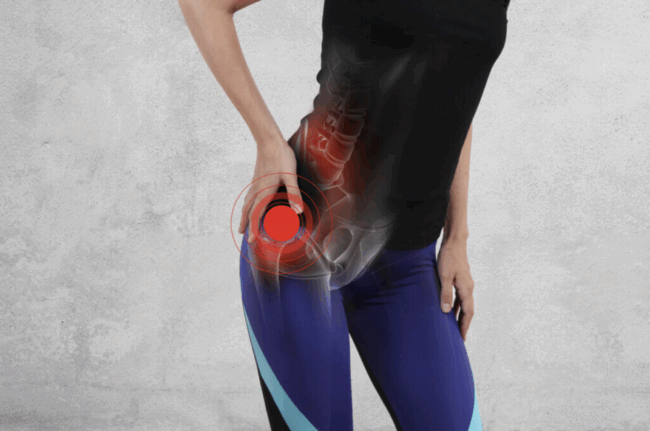Lateral Hip Pain? Physio can help!
Published on
07 Jul 2025

Call us on: (03) 9975 4133
Pain on the outer side of your hip is common and can disrupt daily activities. Whether walking, running, or sitting for long periods, the discomfort can make life harder. Two of the most common causes of this pain are Trochanteric Bursitis and Gluteal Tendinopathy. These conditions affect the muscles and tendons around the hip joint but have different causes and treatments. In this post, we’ll explore both and how physiotherapy can help.
What is Trochanteric Bursitis?
Trochanteric Bursitis occurs when the bursa, a small fluid-filled sac on the outer side of the hip, becomes inflamed. The bursa cushions and reduces friction between bones and soft tissues. When irritated—often due to repetitive movement, compression or overuse—it causes pain on the outer hip.
This condition is triggered by activities like running, cycling, or prolonged sitting. It’s also common in those with poor posture, muscle imbalances, or previous hip injuries. The pain can be sharp and worsen with climbing stairs, lying on the affected side, or standing for long periods.
What is Gluteal Tendinopathy?
Gluteal Tendinopathy involves the inflammation or degeneration of the tendons attached to the gluteus medius and minimus muscles on the outer hip. These muscles stabilise the hip and pelvis during movement. Overloading or injury to these tendons can cause pain, especially during weight-bearing activities.
This condition is often caused by repetitive stress, poor posture, muscle weakness, or tightness in surrounding muscles. People with gluteal tendinopathy may also experience stiffness, difficulty moving, or a limp.
Common Signs and Symptoms of Lateral Hip Pain
1. Pain and Tenderness
Pain on the outer side of the hip, often sharp or dull, and tenderness when touched. It can worsen with activities like running or climbing stairs.
2. Stiffness or Difficulty with Movement
Struggles with movement, such as standing from a seated position, walking long distances, or climbing stairs, can make the pain worse.
How Physiotherapy Can Help with Lateral Hip Pain
If you’re dealing with lateral hip pain, the first step is to visit a physiotherapist for a proper diagnosis. After understanding the cause of your symptoms, physiotherapists use a combination of exercises, hands-on techniques, and lifestyle adjustments to reduce pain, improve mobility, and prevent further injury.
1. Manual Therapy and Soft Tissue Mobilisation
Manual techniques help release tightness in the muscles and fascia around the hip, improving blood flow and reducing inflammation.
2. Targeted Exercise Programs
Strengthening muscles around the hip, especially the glutes and hip abductors, is essential for recovery. A physiotherapist will create an exercise plan tailored to you, including stretching and strengthening to relieve tension and load the tendon appropriately.
3. Posture and Movement Correction
Poor posture or movement patterns may contribute to hip pain. A physiotherapist will assess your posture and gait, helping you move more efficiently and reduce strain on the hip.
4. Activity Modification and Injury Prevention
A physiotherapist will suggest changes to your activities, such as adjusting your exercise routine or taking breaks during prolonged sitting. They’ll also provide strategies to prevent future flare-ups.
Ready to Find Relief from Lateral Hip Pain?
If you’re struggling with hip pain, don’t wait to seek help. With the right treatment plan, you can reduce pain, restore movement, and prevent future injury. Contact Pure Physio today to schedule an appointment. Our team of expert physiotherapists is here to guide you toward a pain-free and active life!
Back to blog home